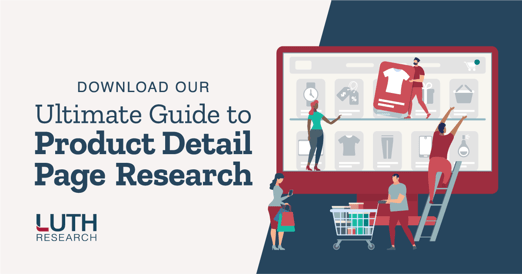For many years, the inflation rate has sat around 2%. But given the recent pandemic and other forces at play around the globe, the US rate has risen to record highs of 8% and above. Although we’re seeing some slowing down in the rises, there’s no doubt that inflation has put enormous pressure on both businesses and households. Consumer shopping behavior is changing in ways we’ve never seen before and for brands, this means keeping on top of audience insights is more important than ever.
How is Shopper Behavior Changing due to Inflation?
As prices rise, in some categories reaching 33% higher, and inflation means everyday household essentials are increasing in price more quickly than wages, many American families are struggling to make ends meet. Unsurprisingly, consumers hit hard by inflation have turned to discounts, coupon shopping, and products that suggest higher value in some way. Brand loyalty has all but disappeared in many categories and shoppers are increasingly pivoting towards Dollar Tree and other low-cost alternatives to their regular shopping basket staples.
Although this trend will likely continue, price cuts aren’t the only way to go. In fact, continuing to slash prices to stay competitive is a losing strategy both for individual brands and for their categories as a whole. As inflation levels out (as it already has done in certain categories), consumer behavior is changing in unexpected ways. Here are some of the emerging trends brought about by recent events:
Shoppers are more fluid in their behavior. They have a greater willingness for switching up brands, substituting, shopping at discount stores, and making all kinds of compromises they would not have considered before now. Keeping the budget under control means shoppers will do whatever it takes to meet their needs – even if it means saying goodbye to a brand they love.
Online shopping and convenience are persuasive. Pandemic lockdowns saw an uptake of online shopping amongst consumers from all demographics. This has bred a more convenience-conscious consumer, who will tolerate fewer obstacles in the path to purchase.
Consumers are more tech-savvy than ever. As shoppers become more familiar with online purchasing, their path to purchase becomes more streamlined. Rather than four product detail page (PDP) clicks, we’ve found the average has dropped to three. Consumers are becoming adept at finding what they want and finding it quickly. If shoppers don’t see a product that meets their needs from one brand, they’ll happily find it elsewhere.
Alongside other trends, such as the importance of trust and security to shoppers and the positive impact of personalization, these factors have made acute audience insights absolutely crucial for brands.
What Inflation-Resistant Brands are Doing
Belts are tightening for everyone – consumers, marketers, and researchers alike. And while it can be tempting to reduce spending on market evaluation and shopper insight data, it can prove fatal for brands. With consumer sentiment shifting so fluidly these days, keeping a finger on the pulse of consumer behavior is the only way to ensure your brand can pivot when necessary and, most importantly, move in the right direction.
Despite disintegrating brand loyalty and constantly changing consumer behavior, some brands are able to get it right, time and time again. It’s not simply luck at play. There are a few things these brands have in common:
Understand the nature of inflation. Only the oldest and most resilient brands have been around long enough to remember the last time inflation was quite this high. And so, it’s difficult to put into perspective the way that inflationary pressures of this magnitude affect customers in the mid- to long-term. The fact of the matter is, consumers, learn to live with inflation. They make sacrifices in spending in some areas (fewer luxury goods, local vacations rather than the annual international trip, and brand-switching on their coffee and laundry detergent purchases, for example). As consumers navigate price increases, their focus inevitably switches from simply trying to find the cheapest alternative, to sourcing products that offer added value. The market is already seeing consumer confidence return in many sectors. Brands that understand the shifting nature of inflation and the wiggle room around price competitiveness and value-adding will more successfully weather the storm.
Phase or reduce costly innovations. Halting all innovations and upgrades is a dangerous strategy – reduced budgets or not. Failing to innovate when budgets are shrinking leaves brands open to being overtaken by competitors and makes catching up almost impossible, even when circumstances are more favorable. Instead, brands should look to phase their innovations to spread out costs and be smarter with their spending. Recruiting market research partners that can deliver sophisticated data at a fraction of the cost of researching in-house is a strategy used by the most inflation-resistant brands.
Invest in research and be ready to pivot. Whilst many brands reduce spending on research and shopper insight data during belt-tightening phases, shrewd shopper insights executives understand that now is the time to invest. Brands aren’t made or broken in the good times, instead, their mettle is tested in the downturns. The savviest brands understand that zeroing in on where consumer sentiment lies day-to-day and being ready to pivot on a dime is the secret to success when things get tough. This week, that might mean cutting prices on the supermarket shelf. But next week, it could mean 2-for-1 offers, higher-value propositions, messaging around quality, or a focus on personal data security in the online store. With consumer sentiment shifting at lightning speed, realizing these things even a beat too late can spell disaster.
Reduce friction and enhance details. Today, newly internet shopping-savvy consumers are roaming the supermarket aisles and expecting their experience to be just as seamless in-store. Brands must ensure their online and in-store experiences are streamlined and friction-free if they want to keep the attention of these buyers. But how does one brand stand out amongst the very-crowded pack? The answer lies in PDPs and effective marketing. Detailed product description pages online help consumers decide whether a product meets their current needs (value, quality, price, trustworthiness) and they’ll pass over a poorly designed PDP. Likewise, in-store product labeling and shelf-side marketing must offer clear messaging around what the shopper is looking for. Successful brands highlight what sets their brand and product apart. Needless to say, this is near impossible without the appropriate audience insights.
How Luth Research Can Help
If brands take away one thing from the current turmoil, it should be that timely data is worth its digital weight in gold. Consumer sentiment is constantly changing, so keeping up and being ready and flexible enough to pivot is essential. We deliver timely data on what consumers think, feel, say, and actually go on to do, through our behavioral data collection technology.
From our ZQ Intelligence ® behavior tracking technology to our Shopper Insights Dashboard, Luth Research offers brands cutting-edge shopper insights data and instantaneous access to the information you need. Find out more about our suite of solutions and how the expert team at Luth Research can help your brand to better understand how inflation is changing consumer shopping behavior today by downloading our Ultimate Guide to PDP Research.




